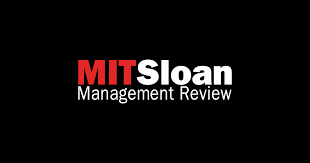
Informed i’s Weekly Business Insights
Extractive summaries and key takeaways from the articles carefully curated from TOP TEN BUSINESS MAGAZINES to promote informed business decision-making | Since 2017 | Week 378, December 6-12, 2024 | Archive

A Better Way to Avoid Project Delays
By Matej Lorko et al., | MIT Sloan Management Review | November 27, 2024
Extractive Summary of the Article | Listen
3 key takeaways from the article
- Why do so many managers underestimate the time it will take to complete a significant project? Almost half of business projects fall behind schedule, and up to a third are not completed at all..
- Late projects trigger cost overruns, reduce quality, and upset clients. While some projects fail due to poor execution or changes in scope, a frequent culprit is an unrealistic time frame that dooms the project before it even starts. Unrealistic schedules may be introduced by a variety of unintentional anchors, including initial wild guesses (“Maybe we could get it done in two months?”), suggestions (“Can you complete the task in three weeks?”), customer expectations (“We’re planning to launch the product right after the new year”), and tentative deadlines (“The CEO asked for the project to be completed by the end of next month”).
- If project planners and managers are more aware of the strong effect that anchors have when estimating timelines and budgets, they can avoid being led astray by uninformed anchors and use helpful anchors to set more realistic expectations.
(Copyright lies with the publisher)
Topics: Project Management, Efficiency
Click for the extractive summary of the articleWhy do so many managers underestimate the time it will take to complete a significant project? Almost half of business projects fall behind schedule, and up to a third are not completed at all, according to a 2021 report by the Project Management Institute. The Berlin Brandenburg Airport took 14 years to construct instead of the estimated five, and its cost ballooned from a 2009 budget of 2.83 billion euros to over 6 billion euros by the time it was completed. And after the V.C. Summer nuclear plant expansion project in South Carolina was abandoned in 2017, two executives involved in what became known as the “Nukegate” scandal pleaded guilty to fraud charges stemming from their efforts to conceal delays.
Late projects trigger cost overruns, reduce quality, and upset clients. While some projects fail due to poor execution or changes in scope, a frequent culprit is an unrealistic time frame that dooms the project before it even starts. Nonetheless, planners often set project schedules that are too short — partly because of uncertainty and ambiguity around the full scope of work required but also due to the expectations and enthusiasm of project sponsors.
Excitement about a new project can spur optimism, which may bias even experienced executives to underestimate the time needed to execute the work. However, if members of a project team consider a CEO’s optimistic estimated time to complete to be plausible, that is extremely likely to influence their judgment and be reflected in their own estimates. This is an example of anchoring, a cognitive bias that causes us to give more weight to the first piece of information we get on a given topic.
Unrealistic schedules may be introduced by a variety of unintentional anchors, including initial wild guesses (“Maybe we could get it done in two months?”), suggestions (“Can you complete the task in three weeks?”), customer expectations (“We’re planning to launch the product right after the new year”), and tentative deadlines (“The CEO asked for the project to be completed by the end of next month”).
In a study, people who were exposed to the high anchor repeatedly estimated that it would take them longer to complete the task, whereas the low anchor led to shorter time estimates. The participants were not told how long they took to complete the task, and the bias persisted on multiple rounds of estimating and executing the task. Importantly, the actual average task duration did not differ between groups.
Given the power of anchors to influence estimates, can project managers strategically use them to avoid overly optimistic schedules and induce people to create more accurate timelines? Project managers often hope to achieve schedule accuracy by collecting excessively detailed descriptions of project deliverables. While more information does result in more realistic schedules, the gains are often marginal and project plans remain too optimistic. Project planners intuitively focus on available specifications, usually not realizing that even the most comprehensive descriptions are necessarily incomplete. In addition, excessive details may lead to more confusion. The authors’ experiment showed that anchoring planners on reference-class information can improve schedule accuracy and on-time project completion. This is a simpler and more effective approach than giving planners as much information as possible about a project.
In another research the authors found that incentives also play an important role in project estimation and delivery. We tested whether focusing exclusively on timely project delivery induces inflated estimates and slower project execution.
show less